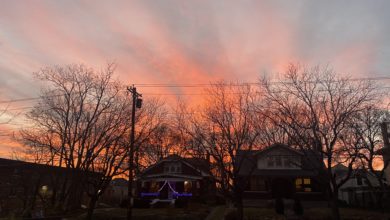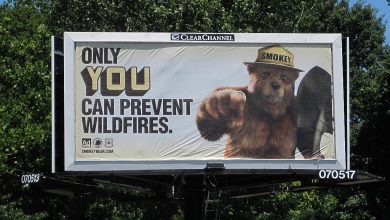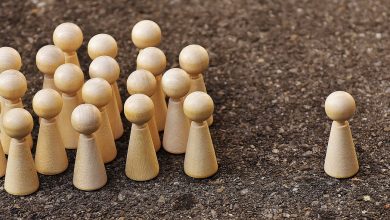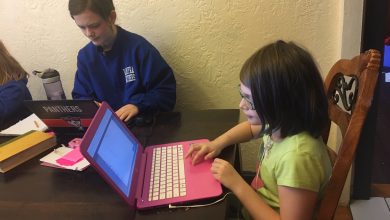A Bazillion Projects for A Wrinkle in Time

I am so excited about the movie A Wrinkle in Time (and a little nervous to be honest, given Disney’s mediocre previous attempt). It is one of my favorite books, partly because it introduced me to academic ideas in really interesting ways and served as a launching point for projects, discussion experiments and exploration.
So, to celebrate the movie, here’s is a massive collection of kid-centered projects and experiments that tie into this book and hopefully engage kids who are already hooked on the story. The projects vary from hard science to random crafts, and you can find my favorite one: the Tesseract project on a previous post.
Bake a “Galaxy” Cupcake or Cake

You will need:
- White or yellow cake batter (a mix or make it from scratch)
- food coloring,
- Optional frosting or frosting ingredients
- Chocolate cake batter (optional, but it is delicious and makes the cakes/cupcakes darker
- Edible glitter (also optional)
Cupcake Instructions:
- Separate the white/yellow batter into 4-5 small bowls
- Add different food coloring to the bowls with colors you would in space
- Place paper cupcake cups in the pan, and pour a spoonful from one of the bowls in each cupcake cup.
- Pour a spoonful from a different bowl in each cupcake cup. The batter will spread while you move to the next bowl. Don’t try to center each spoonful. By having the batter randomly spread around the cupcake, you get bright galaxy-like swirls.
- Continue to pour from each bowl until you have filled the cupcake cups 2/3 of the way full. If it seems tidy, then it’s probably going to turn out like a rainbow rather than galaxy swirls, so gently pull a knife through the batter to slightly blend the colors.
- Bake according to the directions on the box.
- Frost as desired (this is where the rainbow glitter comes in).
Galaxy Cake Instructions:

- Complete the first two steps of the cupcake directions above
- Pour about 1/4 of one color (if you’re using chocolate, now’s the time for chocolate) in the center of the pan
- pour about 1/4 of another color in a random spot on the pan. Continue with random pours until your pan is 2/3 of the way full.
- Drag a spoon or butter knife through the batter in the pan gently in a swirling motion (if you do not do this, the colors will look like stripes)
- Bake according to the instruction on the box & frost as desired. When you cut the cake it will look swirly inside.
- Frost as desired (this is where the rainbow glitter comes in).
Other cooking projects related to the book:
- Make cookies and frost them in a galaxy pattern with chocolate, blue and purple frosting
- Make a liverwurst sandwich (substitute ingredients as needed)
- Make Mrs. Murray’s laboratory stew (use any stew recipe)
Build a 2D planet
Think about what life would be like on a two dimensional world and about how Meg describes her accidental visit to the two-dimensional planet. Create a 2D planet. Something to consider when discussing this with your child is what would the anatomy of a two dimensional being be? We have digestive, circulatory, and respiratory systems that require 3 dimensions to function, but a 2D being would not have that depth. How would a two dimensional creature move through space? How would 2D beings interact? How complex could life be in a two dimensional space?
Help your child design and build a two-dimensional planet. Use one or more pieces of construction paper to create the surface of the planet, people, objects, buildings, and nature. Be creative and don’t worry about making your planet to scale. It will probably end up looking like a poster of a planet, but the process of thinking through life in two dimensions should change the output.
Make a Book

This is more art than science, and it is a lovely art. Choose one of the handmade book formats at Making Books (the materials you need will vary by type of book). Follow the directions to make a beautiful picture final draft book using the medium your child prefers (colored pencils, for example). Below are some topics that work well with these book formats:
- The main characters
- The most important events of the story
- The themes
- Heroes and villains
Several quotes beautifully illustrated
Mini biographies for 8 of the Fighters for Good
A book showing the life cycle of a star
Make a 2D Puppet Video
This is a fun project in which kids can learn about storytelling in two dimensions. They will make a set, characters, and can script a short puppet show. This is easiest done as a puppet interpretation of a song (as in the video on the link), but some kids might enjoy writing out a script and creating a 2D performance.
Instructions:
- Visit this website (and this one) to view the videos Joel Henriques made for his sister’s music using beautiful and simple 2D puppetry.
- Choose a scene from the books to illustrate on your puppet video screen.
- Decide what shapes and figures are needed for puppets and scenery. Keep in mind the simplicity of Joel’s characters and scenery – in one video, they are just shapes.
- Make your scenery and puppets (flat figures on a stick or strings)
- Either choose a song or write a short script (2-3 minutes) for your puppet show.
- The puppet show makes a great live performance or video to share with family far away.
Make a 2D drawing look 3D

L’Engle plays with movement between dimensions throughout the novel. This drawing project is another way to play with that concept. The websites below have instructions and examples of different drawings that play with dimension.
Completing them creates the illusion of 3D on a 2D paper. A fun extension is to use one of the images as a base for a collage for A Wrinkle in Time, or create a drawing with 3D elements that includes a symbol from A Wrinkle in Time.
- Frugal Crafter’s 3D hand art is great for kids with all levels of art ability
- The Art Lady has a simple drawing project that lets beginning artists play with vanishing point and easily make a simple 3D drawing.
Make a Geometric Tensile Bubble
Can’t get enough of geometric shapes? Build a tensile geometric bubble. This is a delicate project, but fun.
Follow the directions at this website linked here to make some interesting geometric bubble wands. These are NOT the kind of bubbles you blow. They only form while on the wand– but it’s possible to carefully blow bubbles like normal by dipping a side of the wand in the solution (which helps for younger kids who may not consider “on wand” bubbles real). This opens up the option of discussing why bubbles are round once they leave the wand despite going through a square/triangle wand.
Grow a flower like on Uriel
Use science to make a beautiful multi colored flower that looks other-worldly like those on Uriel. This is also an opportunity to discuss how transpiration and capillary action works. The USGS website has a nice explanation, as does this site.

Materials:
- 1-6 white flowers (tulips are fastest)
- Food coloring
- baggies
- A shoebox
- water
Tools:
- A small knife, or box cutter
- duck tape
- sharpie (optional)
Our Method (other instructions with pictures are here, and here, here):
- Cut 6 X shapes in the top of the shoebox. Fold down the edges a little to help. This is where you will put your baggies.
- Put 1/3-1/2 cup of water in one bag. Add food coloring, and gently shake/knead the bag to mix (gently is the key here. Have towels on standby–we burst a bag of purple and it was messy!)
- Lift the box of the shoebox, and insert the bag into one of the X holes near the edge from underneath so that the liquid filled part is below the lid, and the tops of the baggie are above the lid.
- Secure the tops of the baggie using the duck tape.
- Repeat this with each baggie then put the lid on the box and secure it with more duck tape.
- Gently one flower in each baggie (if you feel adventurous, use the box cutter to split the stems of the flowers and carefully put each stem section in a different baggie without separating it from the flower itself.
- As a random extension, try having your child put a ruffly piece of celery in one of the baggies with the flower. It’ll pull up the color too!Check on the flowers regularly — tulips will show color within an hour, other flower times vary. This is a good chance to chart the progress or just enjoy the coolness. If you wait multiple days, you will see the leaves draw up color as well.
Create a Beautiful Map

Paint or draw a beautiful map with details about each location and the route the children took on the journey inspired by the beautiful one found in the book Plotted. For more on the book and map, check out Atlas Obscura.
This is a fun project that can go a few different ways. You can review the important locations of the book and make a list of details about the locations: Earth, Camazotz, Uriel, Happy Medium’s home, Ixchel (book only). Some details to consider are dominant colors, natural features/buildings, and mood for each setting. Discuss how to simplify the location details so that they’re symbolic rather than exact.
Create a Star “map”
Three of the settings in the book are based in real locations in the universe: Earth, Orion’s Belt (the Happy Medium’s planet), and Messier 101 Galaxy. Use Google sky or the sky setting on Google Earth to find these locations and learn more about them.
Version 1 (fairly easy, few materials, temporary): Use the directions at this link to make a map using black paper or cardboard, pins, and a light source. Label your map with the locations. This is fun for making multiple mini maps of different locations or constallations.
Version 2 (very involved/complex, many materials, permanent): Use the instructions at this link to make a complex, large LED star map. I have not made this, and it looks like a ton of work, but also really cool.
Study Synchronicity
Everyone on Camazotz moves in sync, which is only possible because they are controlled by a single brain. It is almost impossible for two humans to move in perfect sync, but it turns out pendulums are great at it. In 1665, Christiaan Huygens (yep, THAT Huygens) discovered that pendulum clocks move in sync if they are side by side for long enough. You can read the articles at Real Clear Science and Phys.org, and learn more about the discovery and why pendulums sync.
Grow Crystals

You can’t grow the Happy Medium’s crystals at home, but you can make some pretty amazing crystals, and it’s a great opportunity to learn how crystals can form. There are a ton of websites out there explaining how to grow crystals, here are some of them:
- Alum Crystals: Home Science Tools (instructions and science), Kitchen Pantry Scientist (grow smaller crystals in eggshells)
- Borax Crystals: Instructables (instructions, (science), Scientific American (science + instructions)
- Magnesium Sulphate (Epsom Salt) Crystals in a bowl: BitznGiggles (instructions), ThoughtCo (instructions and science), Epsom Salt Council (video instructions)
- Salt Crystals: Thought Co (instructions)
- Salt and Vinegar Crystals: Layers of Learning (instructions and science),
- Sugar Crystals (Rock Candy): Play – Learn – Grow(instructions), ACS (science)
Become a Fighter
Ok, so this isn’t so much a project as just important. In chapter five, Mrs. Whatsit explains that “all through the universe,” a battle against evil is being fought, and that “some of our very best fighters have come right from your own planet.” The characters produce a list of fighters against the darkness that is a little limited (adding to it is a good discussion in itself). The fighters from A Wrinkle in Time are:
- Jesus
- Leonardo da Vinci
- Shakespeare
- Bach
- Pasteur
- Curie
- Einstein
- Schweitzer
- Gandhi
- Buddha
- Beethoven
- Michelangelo
- Rembrandt
- St. Francis
- Euclid
This opens the door to discuss how these individuals fought against the shadow, and dark thing, and to brainstorm ways that your child/family can do so as well (or already is). Check out the Harry Potter Alliance for one example of youth-driven change.
And that’s it. If you have any additions, please add them in the comments. All images come from Deek or the website linked in the project instructions unless otherwise noted in the captions.




